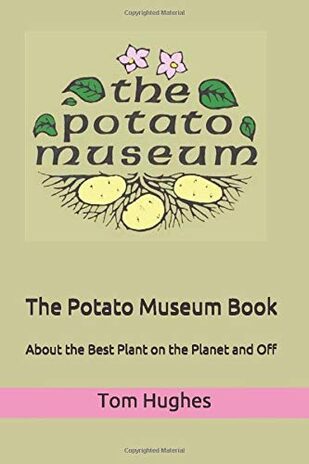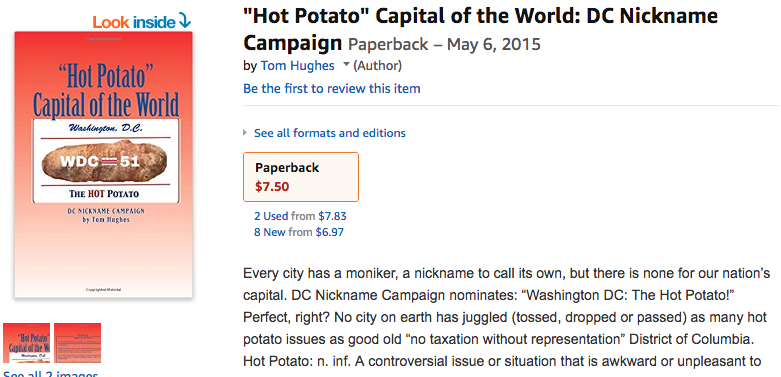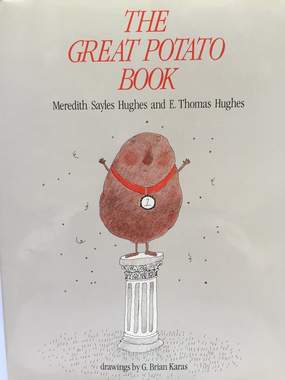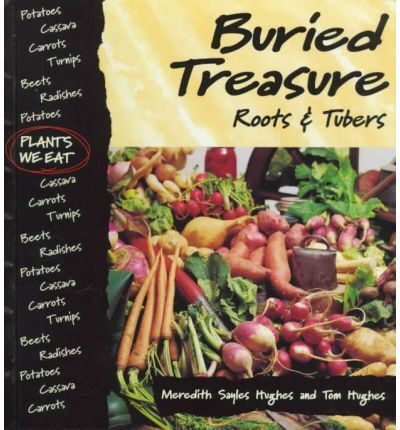- Home
- About
- Exhibits
- The Well-Traveled Potato
- Delicious
- Potatoes 101 and Fun Science and Art Projects for All Ages
- Potato Fun: Heads, Puns and Guns
- Cinematic and Musical Potatoes
- Surprising
- Praiseworthy
- Potato People
- Potato Places
- Book Shop
- Wide World of Potatoes: Links
- Contact Us
- Buy The Collection? Set Up TPM in Your Country/Community?
The Potato Museum Book

"The Potato Museum Book" uses artifacts from the collection to tell the potato's story in seven chapters.
Origins: The potato’s journey from its ancient home in South America, its dispersal throughout the Old World and back to the New occupies our attention in this chapter.
Ubiquitous: The well-traveled and established potato grows in polar and desert regions, high mountain valleys and sea level islands. The potato itself is unique among plants for its quiet influence on the world's history and culture.
Living: The potato is about the world's most efficient means of converting plant, land, water and labor into a palatable and nutritious food.
Delicious: If “we are what we eat,” we’re perilously close to being potatoes. We humans eat them everywhere, everyday and every way.
Powerful: The powerful potato is credited with more than just filling the bellies of the healthy and the long-lived. Some historians believe the Industrial Revolution was actually made possible by the potato because every country that took part in it had the potato as a food staple.
Artistic: Here are examples of how creative people have interpreted the potato in the visual arts, crafts, literature, music, photography and film.
Playful: People can’t resist having fun with potatoes in games, songs, skits or jokes, and have been fooling around with spuds for a long time.
All Available on Amazon
Hot Potato Capital of the World: DC Nickname Campaign

The Hot Potato Capital of the World: Washington DC Nickname Campaign
Every city has a moniker, a nickname to call its own, but there is none for our nation’s capital. DC Nickname Campaign nominates: “Washington DC: The Hot Potato!” Perfect, right? No city on earth has juggled (tossed, dropped or passed) as many hot potato issues as good old “no taxation without representation” District of Columbia.
Hot Potato: n. inf. A controversial issue or situation that is awkward or unpleasant to deal with. ---Oxford Current English Dictionary, 2009
WDC: where devilishly difficult to resolve issues are tackled or not every day by all branches of government, executive, judicial and congressional. This book is about my long-standing belief that Washington, DC is indeed “The Hot Potato.” A nickname it has earned. An association with the noble tuber that is fitting and complimentary. After all, potatoes are significantly more valuable and versatile a commodity than apples any day. And potatoes are all American in origin. Apples come from Kazakhstan. Apple pie is not really American, but any way you prepare them, potatoes are. Better to be identified with the world’s number one vegetable than a fruit that as the saying goes: “it takes only one to spoil the barrel.
But in DC, especially on the president’s desk, in the halls of Congress and at the Supreme Court’s bench, is where the hottest potatoes of all land. If they could be handled by others they would. Over the years, hot potatoes pertaining to wars, rights and financial affairs have been ever present issues making headlines in Washington. Others such as civil service reform and tariffs (high, low or abolished) have been potatoes so fiery to handle that they were passed on through a series of administrations during the nation’s “gilded age.” Some were one time affairs. WDC may qualify as the one place beyond needing a moniker or motto, but that doesn’t prevent a legion of PR types, tourism touts, promoters, image builders, editors, journalists, headline composers, song writers, novelists and me from thinking it needs one. We’ve got a point. Who wants to keep writing, reading or hearing “Washington-this and Washington-that” endlessly? The time for a catchy nickname is long past due.
The book includes lists of "hot potatoes" handled over the nation's long history. It also is full of fun and games that make learning about American political history enjoyable for a wide range of audiences.
The Great Potato Book

Discusses many aspects of the nutritious, delicious, versatile potato--its history, usefulness, and folklore, with games, jokes, and rhymes.
Buried Treasure: Roots and Tubers
Even though this book is mainly orientated to children, adults with little knowledge on this subject can benefit. The book is a very good introduction to learning about potatoes, cassava, carrots, beets, radishes, and turnips; how they grow, where they grow, and the dependences that various peoples across the world have on them. With the above being said, this book should not be misconstrued to be a gardening book, because it is not. It has some growing projects, but that is for learning predominately, not for feeding your tummy. The book does contain cooking projects, though, so get cooking (I'm hungry). It provides interesting, colorful pictures and illustrations, which are also not predominately for eating (whoops!). Did I bring up the history? Let us get to it. The history provide with each vegetable is interesting and informative, but as it is lined with timetables that are influenced by evolutionary beliefs, use critical skepticism in evaluating the information.
The conclusion is...this book is mostly for kids, and if you are a kid, get off of that computer, pronto (Just kidding)! If you are looking for a book that does a great job introducing the subject of roots and tubers, this could very well be your book. If you can, though, try to get this out of your local library before you purchase it to find out if you like it.



